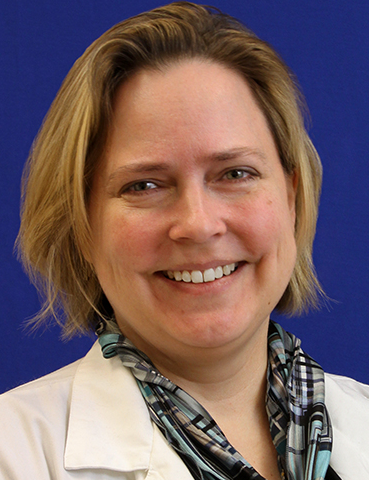Co-Located Conference AgendasExtracellular Vesicles 2023: Drug Delivery, Biologics & Therapeutics | Extracellular Vesicles 2023: Technologies, Biomarker Cargo & Diagnostics | Microphysiological Systems 2023: A Deep Dive into Technologies & Applications | Space Summit 2023: Chips in Space | 

Wednesday, 26 July 2023 |
Please View Details of Programming under the EV Technologies and Diagnostics Website |
| |
Thursday, 27 July 202308:00 | Morning Coffee and Networking in the Exhibit Hall | 08:50 |  | Conference Chair EVs for Therapeutics -- Welcome and Introduction by Conference Co-Chairperson
Mei He, Associate Professor, University of Florida, United States of America
|
| 08:55 |  | Conference Chair EVs for Therapeutics -- Welcome and Introduction by Conference Co-Chairperson
Michael Graner, Professor, Dept of Neurosurgery, University of Colorado Anschutz School of Medicine, United States of America
|
| 09:00 |  | Keynote Presentation Circulating Cells and Extracellular Vesicles as a Source of mRNA for the In Vitro Diagnostics of Acute Ischemic and Hemorrhagic Strokes
Steve Soper, Foundation Distinguished Professor, Director, Center of BioModular Multi-Scale System for Precision Medicine, The University of Kansas, United States of America
Stroke is the third leading killer in the US and the main cause of over 795,000 cases of adult disability each year. The two major types of stroke, ischemic and hemorrhagic, cannot be clinically differentiated; 30% of patients presenting stroke-like symptoms do not have stroke and <5% of stroke patients are treated with available therapeutics (recombinant tissue plasminogen activator for acute ischemic stroke). Computed tomography is commonly used for diagnosis, which provides a clinical sensitivity of only 25%, and in most cases, does not provide clinical information to meet the necessary time requirements for proper therapeutic administration (<4.5 h). Unfortunately, there are no FDA-approved in vitro diagnostic tests for stroke that could address the aforementioned issues. In this presentation, we will provide data on the use of liquid biopsy markers, in particular circulating extracellular vesicles (EVs – CD8 and CD15 expressing EVs) as a source of mRNA to diagnose ischemic and hemorrhagic stroke. Isolation technologies used for the timely enrichment of the appropriate liquid biopsy markers along with rapid reporting molecular assays of mRNA expression will be presented that provide clinical information to assess the status of the patient in terms of a stroke mimic or ischemic/hemorrhagic stroke in a timely manner. Appropriate mRNA gene panels will be presented that provide high clinical sensitivity and specificity for the in vitro diagnostic assay. |
| 09:30 |  | Keynote Presentation Extracellular Biology and Liquid Biopsies: What is Next?
Jennifer Jones, NIH Stadtman Investigator, Head of Transnational Nanobiology, Laboratory of Pathology, Center for Cancer Research, National Cancer Institute, United States of America
|
| 10:00 |  | Keynote Presentation Glial Cell-Derived EVs for Axon Growth and Neurorepair
Damien Pearse, Professor, Department of Neurological Surgery; The John M. and Jocelyn H.K. Watkins Distinguished Chair in Cell Therapies, University of Miami Miller School of Medicine, United States of America
Extracellular vesicles (EVs), particularly exosomes, are important cell-to-cell communication vehicles for influencing target cell behavior both locally and at a distance through their delivery of microRNA and protein cargoes. EVs can be readily harvested from cultured human and rodent glial cells in large yields for potential therapeutic use in neurological diseases and neurotrauma where their affects include favorable immunomodulation, anti-inflammatory activities, suppression of cell death, directed cell differentiation and the stimulation of axon growth and neuroplasticity. Here we will report on our work in which we have identified that EVs derived from Schwann cells and phenotypically converted microglia can promote axon growth of CNS neurons. We will also discuss the utility of glial cell-derived EVs as therapeutic vehicles for spinal cord injury (SCI) protection and repair. |
| 10:30 | Mid-Morning Coffee Break and Networking in the Exhibit Hall | 11:00 |  The Aethlon Hemopurifier for the Removal of Enveloped Viruses and Injurious Extracellular Vesicles The Aethlon Hemopurifier for the Removal of Enveloped Viruses and Injurious Extracellular Vesicles
Steven LaRosa, Chief Medical Officer, Aethlon Medical
The construction and mechanism of action for removal of enveloped viruses, virus particles, and extracellular vesicles will be discussed. Next, the data demonstrating the in vitro removal of viruses and extracellular vesicles from biologic and non-biologic fluids will be presented. Finally, the clinical experience with the Aethlon Hemopurifier to date and clinical plan will be discussed.
| 11:30 | Enhancing Therapeutic Extracellular Vesicle Biomanufacturing via Mechanoregulation
Steven Jay, Associate Professor, University of Maryland, United States of America
This presentation will recap progress on enhancing production of mammalian vesicles via 3D-printed perfusion bioreactors. Additional studies on the effects of various mechanical stimuli (substrate stiffness, cellular confinement) will also be discussed. | 12:00 |  Animal-Origin-Free Chemically Defined Media for Human MSC and Serum-Free Chemically Defined Media for Exosome Isolation: Revolutionary Advances in Stem Cell and Exosome Research Animal-Origin-Free Chemically Defined Media for Human MSC and Serum-Free Chemically Defined Media for Exosome Isolation: Revolutionary Advances in Stem Cell and Exosome Research
Hyungtaek Jeon, Global Product Manager, Xcell Therapeutics Inc.
Xcell Therapeutics introduces two groundbreaking products that aim to revolutionize human mesenchymal stem cell (hMSC) research and exosome isolation. The first product CellCor™ MSC CD AOF is Animal-Origin-Free Chemically Defined Media for Human MSC, which significantly improves cell proliferation, reduces senescence, and demonstrates minimal variation compared to fetal bovine serum (FBS) media and other Chemically defined media.
The second product is a serum-free, chemically defined medium developed for the expansion and isolation of hMSC-derived exosomes called for CellCor™ EXO CD. This innovative medium offers safety, efficiency, stability, and purity, producing higher volumes of extracellular vesicles (EVs) with reduced background particles. Additionally, our novel approach allows for efficient recovery of high-potency exosomes without the need for media change, thereby optimizing exosome collection. Overall, these breakthrough products have the potential to drive advancements in stem cell and exosome research, facilitating discoveries and applications in regenerative medicine and therapeutics.
| 12:30 |  | Keynote Presentation Engineered Stem Cell-Derived Extracellular Vesicles: Promising Theranostics for Tissue Regeneration
Aijun Wang, Chancellor's Fellow Professor, University of California-Davis, United States of America
Stem cells and stem cell-derived extracellular vesicles (EVs) have remarkable therapeutic potential for various diseases and conditions. We have developed technologies to engineer and manufacture clinical-grade placenta-derived mesenchymal stem cells (PMSCs), and have shown that PMSCs and PMSC-derived EVs (PMSC-EVs) hold significant promise in tissue regeneration applications. However, the therapeutic efficacy of EVs has been largely limited due to their degradation and rapid diffusion after administration, hindering their translational applications. We developed a series of technologies to engineer EVs to improve their therapeutic function. One example is the new generation of collagen-binding EVs, which were designed and produced by chemically conjugating a collagen-binding peptide SILY to EVs (SILY-EVs) via click chemistry. This design enables the binding of EVs to collagen in the extracellular matrix (ECM) and form an EV-ECM complex that significantly improves EVs' in situ retention and therapeutic efficacy after transplantation. We thoroughly optimized the EV surface chemical modification methods and characterized the engineered EVs using a series of in vitro bulk and single EV characterization approaches and further in a mouse hind limb ischemia model in vivo. We confirmed that SILY-EVs presented longer in situ retention, suppressed inflammatory responses, and significantly augmented muscle regeneration and vascularization, compared to the unmodified EVs. With the broad distribution of collagen in various tissues and organs, SILY-EVs hold promise to improve the therapeutic efficacy of EV-mediated treatment in a wide range of diseases and disorders. Moreover, SILY-EVs possess the potential to functionalize collagen-based biomaterials and deliver therapeutic agents for regenerative medicine applications. |
| 13:00 | Networking Lunch - Network with Colleagues and Meet Exhibitors | 13:30 | Large Scale Manufacturing and Functional Assessment of Extracellular Vesicles
Heather Branscome, Senior Scientist, ATCC and Research Assistant, George Mason University, United States of America
The interest in extracellular vesicles (EVs) underlies a significant need for both the isolation of high quality EVs from large-scale batches and the development of industry standards for the characterization and quality control testing of EVs. While traditional methods, which include the use of ultracentrifugation and density gradients, are suitable for small-scale studies, the development of scalable and robust processes for the isolation of EVs is essential to meet the growing needs of the scientific community. Here, we report the large-scale isolation and characterization of functional EVs from both cancer cell lines and stem cells. Collectively, we demonstrate our ability to reproducibly manufacture production-scale batches of high quality EVs from multiple different cell types. Our EVs are of high yield, meet well-established quality control specifications, and are robust in maintaining size distribution, surface marker expression, and functionality in vitro. Therefore, they can serve as ideal reference materials that can support a wide range of different EV-based research applications. | 14:00 | EVs and the Inner Ear: Diagnostic and Treatment Opportunities
Hinrich Staecker, David and Mary Zamierowsky Professor, Department of Otolaryngology, University of Kansas Health System, United States of America
Inner ear diseases are common, yet no good diagnostic or therapeutic interventions exist. EVs provide an opportunity to diagnose inner ear disease and with custom manufacturing approaches can be applied to treat inner ear disease.
| 14:30 | An Effective Peptide-based Platform for Efficient Exosomal Loading and Cellular Delivery of a microRNA
Zucai Suo, Eminent Professor & Dorian and John Blackmon Chair in Biomedical Science, Florida State University College of Medicine, United States of America
Exosomes, membrane-bound nanosized vesicles of biologic origin, are known to contain various molecules, e.g., proteins, lipids, and nucleic acids, which contribute to the exosomes’ ability to mediate cell-to-cell communication. Recent impediments of artificial nanoparticles in drug delivery, including low cellular uptake, activation of the immune system, and tissue obstacles, have led scientists to engineer exosomes as drug delivery vehicles. Though exosomes possess inherent properties of stability, biocompatibility, low immunogenicity, and capability to cross biological barriers, there is a need to develop technologies that allow the efficient loading of therapeutic materials into exosomes. Here, we introduced a simple peptide-equipped technology that can enhance the cargo-loading potential of exosomes in a mild loading environment. Specifically, a known cell-penetrating peptide, YARA, derived from human immunodeficiency virus-1 trans-activator of transcription, was covalently conjugated with miR21-5p, a mammalian microRNA. The conjugate YARA-miR-21-5p was then incubated with exosomes, isolated from either mesenchymal stem cells or cancer cells, for loading. Exosomal loading of YARA-miR-21-5p was time-dependent and demonstrated an impressive 18.6-fold increase in efficiency over exosomal loading of miR-21-5p through incubation. After effective cellular uptake, the loaded exosomes rapidly delivered YARA-miR-21-5p into mammalian cells. Relative to unloaded exosomes and free YARA-miR21-5p, the loaded exosomes significantly enhanced the proliferation, migration, and invasion of human and mouse fibroblasts, which are vital steps in wound healing. This study lays the groundwork for using cell-penetrating peptides as an innovative approach to efficiently load therapeutic cargos, e.g., microRNAs, into exosomes, which can then be employed to deliver the cargos into cells to yield biological effects. | 15:00 | Genetic Engineering of Nanoscale Exosomes for Targeted Drug Delivery and Therapy
Bill Lu, Associate Professor, Santa Clara University, United States of America
Human cell-derived nanoscale exosomes are the fast-growing class of biologics with potential treatments of many difficult-to-manage human diseases such as cancer, hereditary and genetic defect, viral infection and inflammation, as well as cardiovascular and neurological disease. Owning to their intrinsic biocompatibility, high tissue-penetrating ability, and large capacity in delivery of various biological cargos, exosomes have overtaken the traditional small-molecular therapeutic paradigm and opened new horizons in advanced therapeutic applications. This seminal talk focuses on novel techniques for exosome surface engineering on functional moiety installation, drug loading and intracellular delivery. Furthermore, specific examples of how exosomes are engineered to display targeting moieties on their outer surface or to load therapeutic agents in living human cells are also discussed. | 15:30 | Delivery of Mitochondria-Containing Extracellular Vesicles to the BBB
Devika Manickam, Associate Professor, Duquesne University, United States of America
Extracellular vesicles (EVs) are natural, cell-secreted nanoparticles that have known roles in intercellular communication. Our work has demonstrated that the innate mitochondrial cargo in EVs can be transferred to recipient cells and tissues resulting in increased mitochondrial function. My talk will describe how delivery of innate mitochondrial cargo can be exploited for BBB protection in ischemic stroke. | 16:00 | Exosomes as Liquid-Biopsies for Alzheimer’s Disease (AD)
Christina Coughlan, Assistant Research Professor, Director Biorepository Core , University of Colorado Anschutz Medical Campus, United States of America
An estimated 6.5 million Americans are living with Alzheimer’s disease (AD), a number that is expected to more than double by 2050. AD is the fifth leading cause of death among adults aged 65 and older, and the seventh leading cause of death among all adults. In 2021, the U.S. spent over $355 billion on AD/dementia, while 11 million Americans provided billions of hours of unpaid care for those affected. And yet, there remains no cure, and much information is still needed for us to more fully understand how AD pathology is initiated and propagated in a manner that results in neuro-degeneration, memory loss and death. To better understand AD in terms of its causes, progression and response to interventions, more sensitive and selective Biomarkers are essential. While CSF and Amyloid/Tau PET imaging, in research settings, are considered the gold standards for determining who with dementia is on the AD continuum, these approaches are both invasive and costly. If these become the most reliable diagnostic tools of the future, it will serve to further increase the chasm in health disparities as these tools are unavailable and unaffordable to many in our community. An additional challenge is that pathological changes related to AD begin up to 20 years before symptoms are evident, often leaving the medical community with the impossible task of reversing years of pathology at first diagnosis. While Amyloid and Tau PET imaging and CSF Biomarkers could provide earlier identifiers of high-risk individuals, their routine use is neither practical nor affordable in an already taxed healthcare system. In addition, their use in clinical trials to test preventative interventions to stave off AD neuropathological development and associated cognitive impairment also selects for Institutes with the funds to use these expensive assessments, preventing research that reflects a more diverse community when smaller research centers do not have access to these types of tools. Hence, plasma based, specific, sensitive and selective Biomarker measures that allow us to detect AD in its earliest stages are essential to improve both our understanding of the disease itself and our ability to determine the efficacy of interventions as they are developed. To address the existing deficiencies in accessible and affordable Biomarkers, the overarching aim of our work is is to use plasma exosomes as dynamic read-outs of cellular pathological changes so that AD onset and progression can be identified earlier, possibly preclinically, and the efficacy of therapeutic interventions determined. In our pilot study of 5 Control and 5 Mild Cognitively impaired (MCI) individuals (amyloid PET -ve and +ve respectively), our novel markers identified changes even at the earliest stages of AD. These tools are now being tested in larger cohorts to further test for the sensitivity and specificity of these Biomarkers. In addition, the approach utilized to develop these tools is now being applied to diseases that are in much need of early diagnostics such as pancreatic and ovarian cancer. Our hope if that we will develop more accessible and affordable tools for use in the clinic and in clinical research settings. | 16:30 | sEV Sub-populations Derived from Cancer Cells that Express the AlphaVBeta3 Integrin
Cecilia Verrillo, Research Student, Thomas Jefferson University, United States of America
Small extracellular vesicles (sEVs) released from prostate cancer (PrCa) cells contain pro-tumorigenic cargo and are crucial components of cellular crosstalk. The AlphaVBeta3 integrin is expressed in PrCa sEVs. The primary goal of this project was to identify the impact of AlphaVBeta3 expression and associated proteins in sEVs derived from PrCa cells. sEVs were isolated by differential ultracentrifugation followed by density gradient separation. After separation, sEVs were characterized by NTA, western blot analysis, and single vesicle analysis by Exoview. While there are no differences in tetraspanin compositions of sEVs isolated from C4-2B AlphaVBeta3+ compared to C4-2B Mock cells, the expression of AlphaVBeta3 in C4-2B PrCa cells results in a distinct shift to low density sEVs. These sEVs contain novel pro-tumorigenic cargo molecules: NgR2 and PD-L1, an effector of AlphaVBeta3 and a key player in immune evasion, respectively. AlphaVBeta3/NgR2+ sEVs increase NgR2 expression upon transfer to recipient cells. sEVs isolated from PrCa cell lines and mouse models of PrCa also specifically express six-transmembrane epithelial antigen of the prostate 1 (STEAP1), a metalloreductase upregulated in PrCa and not its family members STEAP2 or STEAP3. Overall, our results show that AlphaVBeta3 expression is a key regulator of sEV density and pro-tumorigenic cargo loading. | 16:45 | Extracellular Vesicle-Mediated Amyloid Transfer and Intercellular Communication within the Neurovascular Unit
Michal Toborek, Professor and Vice-Chair for Research, University of Miami School of Medicine, United States of America
It is widely accepted that elevated brain deposits of amyloid beta (A-beta) contribute to neuropathology in Alzheimer’s disease. Additionally, A-beta deposition was demonstrated to be elevated in the brains of HIV-infected patients and associated with neuro-cognitive decline; however, the mechanisms of these processes are poorly understood. The role of the blood-brain barrier (BBB) as an interface for the transfer of A-beta from the periphery into the brain and the cells of neurovascular unit is poorly characterized. Indeed, substantial population of neural progenitor cells (NPC) reside near brain capillaries that form the BBB. The purpose of this study is to understand the impact of brain endothelium-derived extracellular vesicles containing A-beta (A-beta-EVs) on metabolic functions and differentiation of NPCs. Mechanistically, we focused on the role of mitochondria, the receptor for advanced glycation end products (RAGE), and activation of the inflammasome on these events. We demonstrate that physiological concentrations of A-beta-40 can transfer and accumulate in NPCs via endothelial EVs. This transfer results in mitochondrial dysfunction, disrupting cristae morphology, metabolic rates, fusion and fission dynamics of NPCs, as well as their neurite development. Moreover, our results show that A-beta partly co-localized with the inflammasome markers ASC and NLRP3 in the recipient NPCs. This co-localization was affected by HIV and RAGE inhibition by a high-affinity specific inhibitor, FPS-ZM1. Interestingly, both A-beta-EVs and RAGE inhibition altered NPC differentiation. Overall, our data indicates that intercellular transfer of A-beta-40 is carried out by brain endothelium derived EVs that can induce mitochondrial dysfunction and alter cellular signaling, leading to aberrant neurogenesis of NPCs. These events may modulate EV-mediated amyloid pathology in the HIV-infected brain and contribute to the development of HIV-associated neuro-cognitive disorders. | 17:15 | Extracellular Vesicles-mediated Organ Crosstalk in Systemic Inflammatory Disorders
Nazli Khodayari, Assistant Professor, Department of Medicine, University of Florida, United States of America
Liver has a key role in the modulation of systemic inflammatory responses. It is evidenced that normal liver function exerts lung protection and is necessary for recovery from lung damage. Lung–liver axis is critical for integrating systemic responses and disbalance in this communication can be an important factor in the damage to both organs. EV have been shown to regulate pathophysiological events via their intercellular and inter-tissue transfer of their cargo. In chronic lung inflammatory diseases, changes in the number and content of EV have been reported during exacerbation of the disease. The liver is exposed to EV released by intrahepatic and various extrahepatic cells and organs such as lung through blood circulation. Circulating pro-inflammatory EV can promote liver fibrosis by activating liver immune cells. Here, we investigate the contribution of extrahepatic inflammation in the progression of alpha-1 antitrypsin deficiency-mediated liver disease, by focusing on lung derived proinflammatory EV. | 17:45 | Stimulating Production of Osteoclast-derived Regulatory Extracellular Vesicles to Therapeutically-control Bone Remodeling
Shannon Holliday, Associate Professor of Orthodontics and Anatomy & Cell Biology, University of Florida, United States of America
Osteoclasts produce extracellular vesicles (EVs) that stimulate bone formation by osteoblasts. Our recent data suggest that the production of these EVs can be increased experimentally. We are now seeking to dissect the regulatory pathways that are involved. The goal is to therapeutically-stimulate osteoclasts to produce EVs that promote bone formation. Such agents could prove more useful than current therapeutics for treating bone diseases, or repairing bone defects. | 18:15 | Engineered Extracellular Vesicles for Therapeutic Applications
Natalia Higuita-Castro, Associate Professor, The Ohio State University, United States of America
Maria Rincon-Benavides, Scientist, The Ohio State University, United States of America
Over the past two decades, nanoscale technologies have emerged as a promising tool to enable groundbreaking biomedical research and translational applications. This seminar will focus on discussing the use of nanotechnology-enabled strategies to develop novel nanocarriers based on engineered extracellular vesicles (EVs) to target cell populations in the lung, brain, and intervertebral disc (IVD). EVs are cell-derived carriers that share molecular cues with their donor cell and play a crucial role in cell signaling under healthy and pathological conditions. The implementation of engineered EVs as next-generation non-viral nanocarriers for gene and drug delivery helps to circumvent major practical and translational barriers inherent to other delivery methodologies, such as capsid size and redosing restrictions for viral vectors. Our data highlights the potential of engineered EVs to drive direct reprogramming processes of somatic cells towards induced endothelial or neuronal tissue, as well as their ability to reduce inflammation and facilitate tissue repair/regeneration. | 18:45 | Close of Day 2 Conference Programming |
|


 Add to Calendar ▼2023-07-26 00:00:002023-07-27 00:00:00Europe/LondonExtracellular Vesicles 2023: Drug Delivery, Biologics and TherapeuticsExtracellular Vesicles 2023: Drug Delivery, Biologics and Therapeutics in Orlando, FloridaOrlando, FloridaSELECTBIOenquiries@selectbiosciences.com
Add to Calendar ▼2023-07-26 00:00:002023-07-27 00:00:00Europe/LondonExtracellular Vesicles 2023: Drug Delivery, Biologics and TherapeuticsExtracellular Vesicles 2023: Drug Delivery, Biologics and Therapeutics in Orlando, FloridaOrlando, FloridaSELECTBIOenquiries@selectbiosciences.com